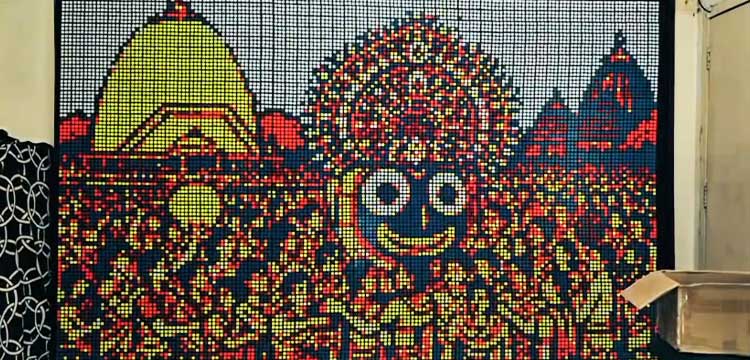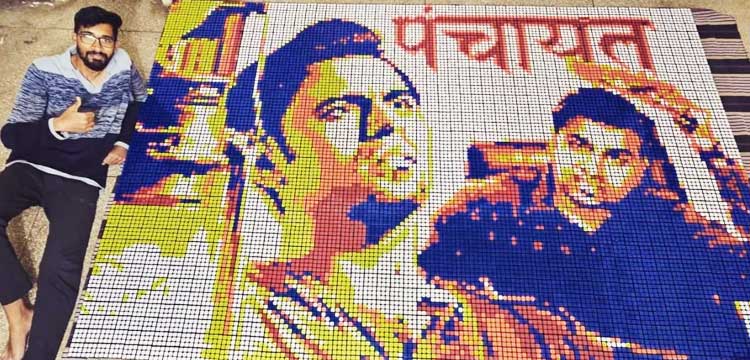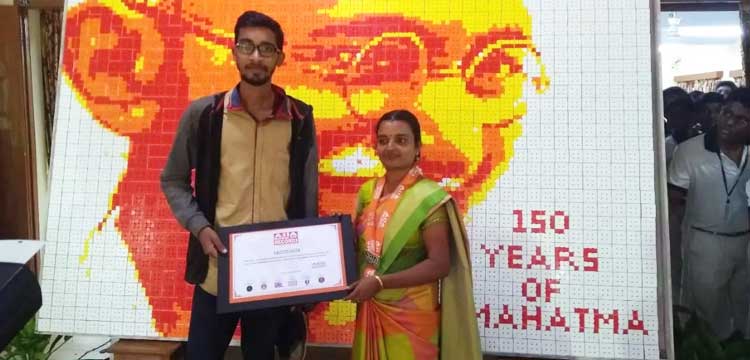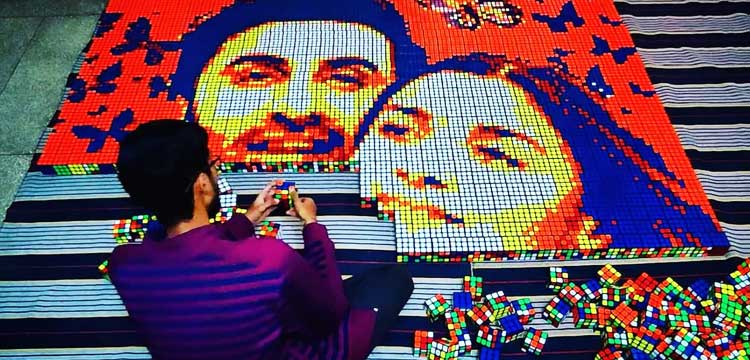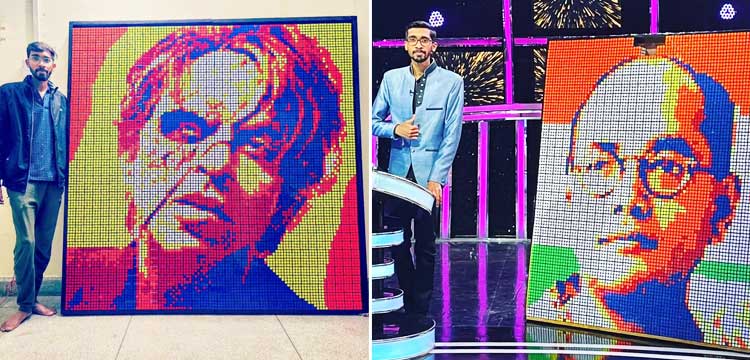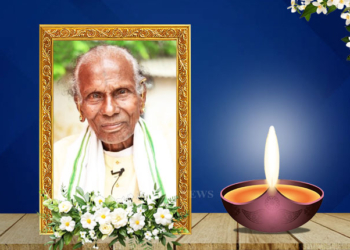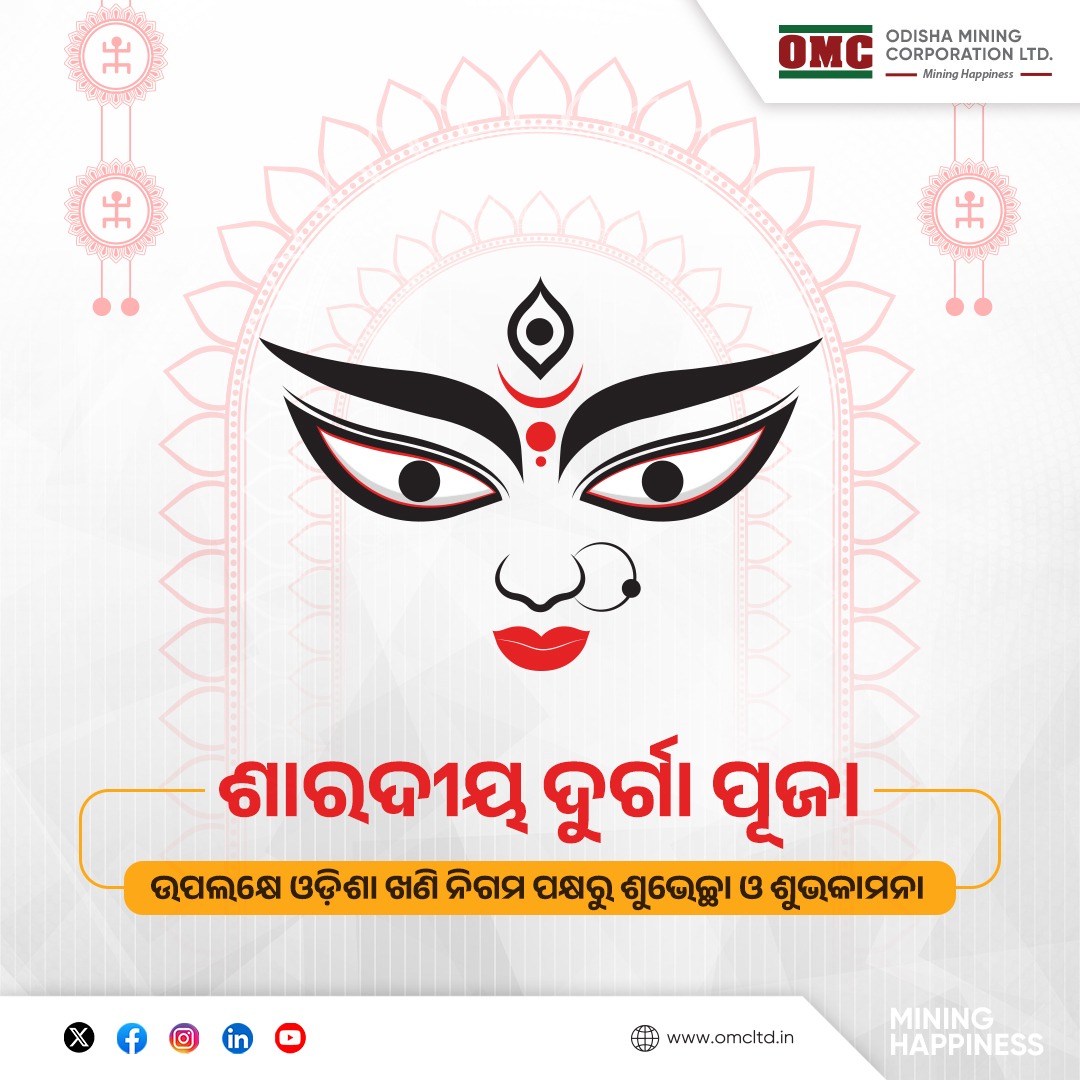Deogarh/Bhubaneswar: A Rubik’s Cube is usually seen as a puzzle — a test of patience or intelligence. But for Sumeet Dwibedy, it became something far more profound: a canvas, a memory, a tribute, and a dream all at once. From a small hostel room in his engineering college, he began experimenting with colored cubes, meticulously arranging them to form the faces of leaders, film stars, and even Deities. Each portrait tells a story — of dedication, struggle, and an imagination that refuses to be ordinary.
In a country where only a handful of people are exploring cube art, Sumeet’s work stands out not just for its technical precision but also for the heart it carries. His journey — from a boy watching a junior twist a cube in a corridor to an artist recognised in records and media — is a testament to how creativity can emerge in the unlikeliest of places, if nurtured with patience, passion, and persistence.
Early Life and Education
Sumeet was born and raised in Purunagarh, Deogarh district. He completed his schooling there until Class X before moving to Vikash Residential School in Bargarh for higher secondary studies. Ambitious and focused, he then went to Kota, Rajasthan, to prepare for the Joint Entrance Examination (JEE). His hard work paid off and he joined the Government College of Engineering, Keonjhar (formerly the Orissa School of Mining Engineering), in the Mining department.
While his peers focused on engineering textbooks and labs, Sumeet noticed something different — a Rubik’s Cube being solved by a junior in the corridor. Curiosity struck and he learned to solve it himself. At the time, he had no idea the cube could be used to create art.
“I first saw someone solving a Rubik’s Cube when I was studying Plus Two at Vikash. A junior student was twisting the cube in the corridor. I asked him to teach me — and that is how I first learned,” Sumeet recalls.
The Spark of Cube Art
The idea of creating cube portraits first took shape during Sumeet’s second year of engineering when he came across the work of Italian cube artist Giovanni Contardi online. At that time, only a handful of artists in India were exploring cube art and Sumeet was immediately fascinated.
Driven by curiosity and passion, he spent two to three months experimenting to master the technique of forming portraits from cubes, despite numerous challenges.
Coming from a middle-class family—his father a businessman and his mother a homemaker—purchasing cubes in bulk was a significant hurdle. With the help of a Rs 10,000 annual state government scholarship and by borrowing Rs 5,000 from friends, he managed to buy his first set of low-quality cubes and began his artistic journey.
His first portrait was a personal experiment. His second was a tribute to a friend who died in a road accident, reflecting the emotional depth that would later define his work. Gradually, he started saving pocket money and freelancing to fund bigger projects, eventually buying 500 higher-quality cubes.
First Breakthrough and Recognition
Sumeet’s breakthrough came with a cube portrait of Tollywood star Prabhas, capturing his iconic look from the movie ‘Salaar: Part 1 – Ceasefire.’ When he shared the artwork on social media, it quickly went viral, attracting widespread attention and coverage from South Indian media outlets. Buoyed by this success, Sumeet continued to hone his craft, completing around 150 small-scale cube portraits during this time.
A major milestone came when he collaborated with an art enthusiast from Tamil Nadu for a project marking Mahatma Gandhi’s 150th birth anniversary.
“I used to buy all my cubes from a dealer in Delhi. One day he told me that a woman in Tamil Nadu had purchased cubes to make a portrait but did not know how to use them. She had the money and the cubes, but not the technique. I connected with her and created a portrait of Gandhi Ji,” Sumeet said.
During his fourth year of college, Sumeet traveled to Tamil Nadu and created a massive portrait of Gandhi using 1,927 cubes. The work was successfully registered in the Asia Book of Records — a record-breaking achievement for cube art in India.
Balancing Engineering and Art
After completing engineering, Sumeet was selected through campus placement by Hindustan Zinc Ltd., a global leader in zinc, lead, and silver production, based in Udaipur, Rajasthan. He worked as an Associate Manager, overseeing extraction and purification processes, for over 4.5 years.
Even with an 8-hour industrial job, his passion for cube art continued. Using his salary, he invested Rs 1.5 lakh to buy over 1,920 cubes for large-scale projects. He designed digital blueprints for portraits and created frames for 1,820 cubes to bring his visions to life. Each large-scale portrait took about a week to complete, showcasing his discipline, precision, and patience — qualities honed during his engineering studies.
Notable Works and Media Recognition
Sumeet’s art includes:
- An Asia Book of Records recognition in November 2019 for participating in the record event “Most Contributions to a Rubik’s Cube Mosaic.”
- Portraits of Subhas Chandra Bose, featured on the Odia reality show ‘Dadagiri Hrudaya Ru’ hosted by Anubhav Mohanty.
- Portraits of Lord Jagannath and other cultural icons.
- Portraits of numerous film celebrities and public figures, including Lata Mangeshkar, Jitendra Kumar (Panchayat), Shah Rukh Khan (Jawan), Odia legendary actor Uttam Mohanty, and cube portraits for films like ‘Saiyaara.’
To date, he has completed over 20–25 large-scale portraits and more than 150 smaller pieces. Production houses such as ‘Love in Vietnam’ have commissioned his work, featuring actress Avneet Kaur and Shantanu Maheshwari, recognising the unique blend of creativity and precision he brings.
Challenges and Philosophy
Despite recognition, Sumeet acknowledges the practical difficulties of turning cube art into a full-time career.
“People appreciate my work on social media, but in India, only a few art forms—such as dance, singing, and acting—are widely recognised and financially rewarding. Cube art, however, remains unconventional. To survive, I needed financial stability first, which is why I never quit my current job. Simply dreaming about pursuing cube art is not enough to make things happen. This applies not only to cube art but to any field. In practical life, the first step is crucial, especially since many families depend on their children for support. That’s why everyone should first become financially independent and secure a stable job. Once that foundation is in place and they have time, they can then pursue their passion on a larger scale. This is how unconventional dreams succeed,” said Sumeet.
Legacy and Vision
From a small-town boy inspired by a junior solving a puzzle to an Asia Book of Records holder, Sumeet’s journey proves that art can emerge from anywhere when nurtured with patience, perseverance, and imagination. His work is not only a technical feat but also a deeply human story — one of loss, dedication, and creativity.
Sumeet continues to experiment, pushing boundaries with larger portraits and new subjects, proving that the Rubik’s Cube — once a simple puzzle — can indeed tell stories, honour memories, and capture hearts.




